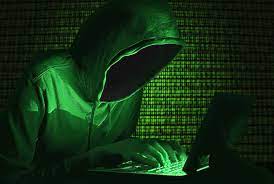
After reading and writing about American Kingpin, the story of Ross Ulbricht, my interest in the dark web and the deep web absolutely peaked. I realized that while I had certainly heard these terms, I really had no idea what they meant or what these things were. As such, I decided to look into the part of the internet that remains unknown to the vast majority of the population. To do so, I began where my interest began, with Ross Ulbricht and his use of the dark web. In American Kingpin, Ross uses the internet browser “Tor” for his illegal website, The Silk Road. Thus, I first sought to understand how Tor is accessed and used.
Tor
Tor is a free of charge and open-source software which allows internet users to browse anonymously while concealing their location and user history using server relays. “Tor” stands for “The Onion Router” which refers to the principle of “Onion routing” which was developed, ironically, by the US Department of Defense in the 1990s. It is called Onion routing because of the nested encryption layers that metaphorically parallel an onion’s layers. In theory, Tor can be downloaded by anyone with access to the internet. In fact, all one needs to do is google “download Tor” to find a link to do so. Throughout its history, Tor has been used for both legitimate and illegitimate purposes. The US government largely subsidized Tor until 2012 as it used its encryption software for classified communication. However, in more recent years, Tor has become a haven for websites such as Ross Ulbricht’s Silk Road, human trafficking, and general criminal mischief. However, many extremely legitimate uses remain, which is one of the reasons why international governments have not made attempts to dismantle it. Tor has recently been used by victims of domestic violence to connect to social workers without their abuser’s knowledge. Uses such as this, among others, make Tor an invaluable asset to many across the world who need to maintain their privacy. However, this privacy also gives credence to those who would mean to break the law.

The Dark Web
Using Tor allows you to access the non-monitored part of the internet. This large virtual space is colloquially known as the “Dark Web” (not to be confused with the “Deep Web” which we discuss later). The Dark Web actually began, surprisingly as a school project of a student at the University of Edinburgh in Scotland. The creation of Tor, by the US military, dramatically expanded its accessibility. Today, the Dark Web is the host of more than 55,000 domains. To access these websites, one must use a browser such as Tor or one of the many other Dark Web browsers. As explained above, the Dark Web is full of both licit and illicit materials. One of the most prominent illicit materials found on the Dark Web, especially since the dismantling of Ross’s Silk Road, is information. Whether it be online shopping account information to proprietary aerospace technology, the Dark Web is the world’s largest market for the illegal purchase of private information. A cloned Mastercard with the PIN number goes for an average Dark Web Price of $25 according to the Dark Web Price Index. Moreover, the years 2020 and 2021 have been some of the worst of all time for cyberattacks. Massive companies such as Lockheed Martin and Microsoft have experienced multiple significant breaches in the past two years. Information from these two companies and many more were later found for sale on a multitude of Dark Web websites. These breaches are serious concerns for both the public and the private sector as companies, governments, and private citizens scramble to ensure their information is secure.
The Deep Web
In contrast to the Dark Web, which refers to a specific set of encrypted (often illegal) websites, the Deep Web refers to all information that is found and logged on the internet that cannot be accessed through standard browsers. While many often confuse the two, one is much larger than the other. The Dark Web is simply a subset of the larger umbrella of the Deep Web. As such, it is estimated that the Deep Web is as large as 550 times the size of the “Surface Web” (the websites we all use regularly). This information makes up nearly 99% of all the internet. Imagine the Deep Web as the internet’s log of everyone’s passwords, usernames, browsing history, and any other information that has been logged onto a website. The Deep Web contains nearly all password-protected websites that are only accessible by one particular person (your Gmail inbox for example). For the most part, this information is very secure. However, the aforementioned sale of information on Dark Web websites usually occurs due to breaches in the Deep Web in which hackers are able to access these large pools of information.

Summary
To conclude, these huge portions of the internet, The Deep Web and The Dark Web are both extremely important pieces of software. The Deep Web is the foundation upon which the rest of the internet is built. Without it, many password-protected websites would not exist. Moreover, the Dark Web, along with Dark Browsers such as Tor, is crucial for many who seek to use the internet without fear of detection, including the US government. However, due to those who would seek to use it for nefarious purposes, the Dark Web has become host to many criminal enterprises. This includes the catalyst for this blog, Ross Ulbricht’s Silk Road.
While my curiosity has led me to learn more, I am still wary of downloading Tor to see it for myself. Downloading Tor and accessing the Dark Web is certainly not against any law, however, given the plethora of danger on this part of the internet, I am unsure if it is worth the risk. I would love to know the class’s thoughts on this.
Sources
https://www.privacyaffairs.com/dark-web-price-index-2021/
https://www.britannica.com/story/whats-the-difference-between-the-deep-web-and-the-dark-web